Best Sony lenses 2024: top lenses for Sony mirrorless cameras
There's now a E-mount lens to suit pretty much any occasion
- Quick list
- Best wide-angle zoom
- Best APS-C wide-angle zoom
- Best wide-angle prime
- Best standard zoom
- Best standard prime
- Best telephoto zoom
- Best telephoto prime
- Best super telephoto zoom
- Best macro zoom
- Best macro prime
- Best for portraits
- Best for reportage
- Best for video
- Best APS-C for beginners
- How to choose
- How we test

1. The list in brief
2. Best wide-angle zoom
3. Best APS-C wide-angle zoom
4. Best wide-angle prime
5. Best standard zoom
6. Best standard prime
7. Best telephoto zoom
8. Best telephoto prime
9. Best super telephoto zoom
10. Best macro zoom
11. Best macro prime
12. Best for portraits
13. Best for reportage
14. Best for video
15. Best APS-C for beginners
16. How to choose
17. How we test
From wide-angle primes to super telephoto zooms, our round-up of the best Sony lenses includes E mount glass for any situation. The challenge is choosing the best one for the scenes you like to shoot, and the money in your pocket. That’s where this guide is designed to help: based on hours of intensive testing, we’ve set out our favorite Sony lenses for every type of photographer.
We’ve distilled a huge catalog of glass into 14 entries that covers all bases and budgets. Below you’ll find a range of recommendations based on our in-depth reviews. That includes the best wide-angle zoom lens (the Sony FE 16-35mm F2.8 GM II), our favorite prime pick (the Sony FE 50mm F1.4 GM) and the top telephoto zoom from our tests (the Sony FE 100-400mm f/4.5-5.6 GM OSS).
Each has been assessed by our expert team in the real world. We check for factors such as speed, noise and build quality, as well as optical performance. We cast our net wide to find lenses for the best Sony cameras. You’ll find third-party options from the likes of Sigma below, as well as glass designed for both full-frame and APS-C camera bodies. If you’re not sure where to get started, try our buying tips at the bottom of this page.

Tim is TechRadar's Cameras editor, with over 15 years in the photo video industry and most of those in the world of tech journalism, Tim has developed a deeply technical knowledge and practical experience with all things camera related. He notes, "many Sony cameras are sold with kit zoom lenses, which are useful for getting started. For more experienced photographers, additional lenses allow you to expand your photography and achieve better results in different situations."
The quick list
The summary below will give you an instant overview of the best Sony E mount lenses for every need and budget. When you find one that fits your requirements, you can follow the links beneath each entry to read our full write-up.
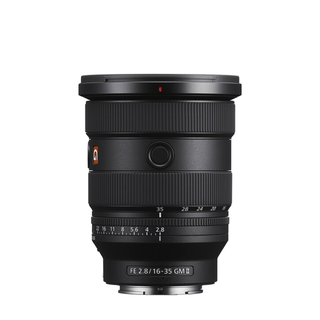
The best wide-angle zoom
Smaller and lighter than before, this premium wide-angle zoom offers incredible detail from edge to edge, making a top choice for pros.
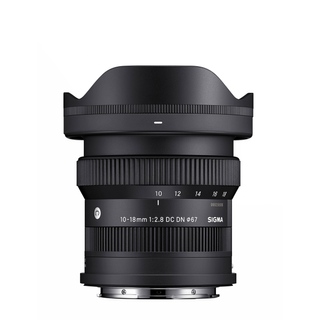
The best wide-angle zoom for APS-C
A wide field of view, constant f/2.8 aperture and compact, high-quality build mean this is a compelling wide-angle lens for Sony APS-C shooters.
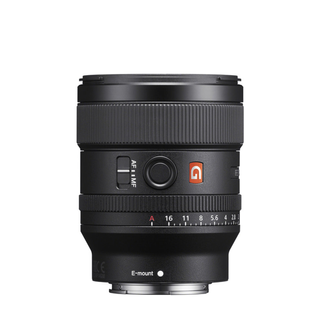
The best wide-angle prime
It doesn’t come cheap, but if you want a high-quality wide-angle prime, this Sony number is light, fast and delivers excellent image quality.
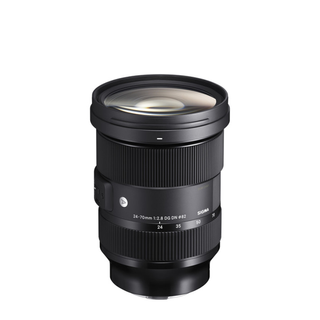
The best standard zoom
It’s pretty weighty at 830g, but this Sigma Art lens excels with its complex optics, fast and silent autofocus, plus superb sharpness and contrast.
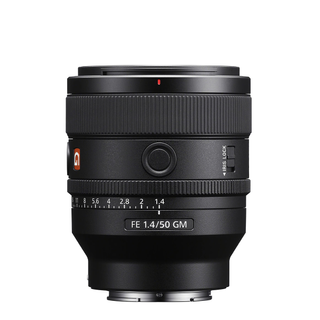
The best standard prime
You’ll pay for the privilege, but this Sony nifty fifty is pretty much the ultimate blend: its compact, lightweight and produces excellent image quality.
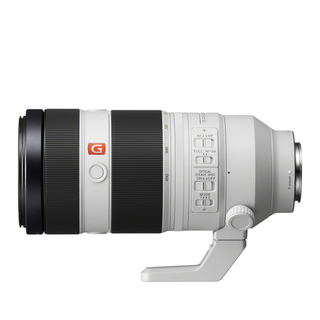
The best telephoto zoom
Its sharpness can’t match prime rivals, but this is a sensibly sized telephoto equipped with a versatile zoom range, capable of a good image quality.
Load the next 8 products...

The best telephoto prime
Chunky but light, this plastic prime balances nicely with Sony's full-frame cameras, delivering beautiful bokeh and incredible sharpness.
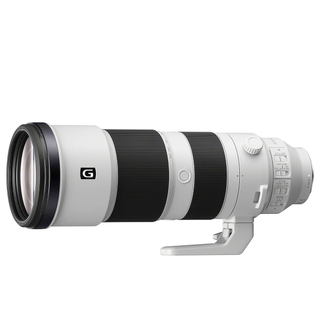
The best super telephoto
Maxing out at an epic 600mm on full-frame bodies and 900mm on APS-C, this super telephoto is hefty but handles well and focuses super fast.
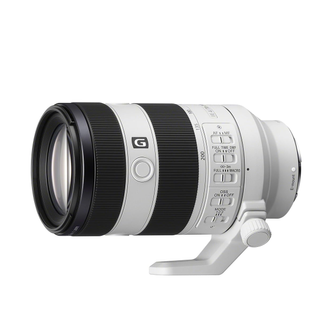
The best macro zoom
Paired with a modern Sony, this is a small, light lens that shoots sharp, focuses fast and offers class-leading macro, making it a truly versatile option.

The best macro prime
Quick, quiet autofocus, quality glass, effective stabilization and excellent handling combine to make this an incredible lens for close focusing.

Best for portraits
Sharp across the frame and capable of dreamy bokeh, this is a fantastic optic for capturing beautiful portraits, with physical controls a bonus.
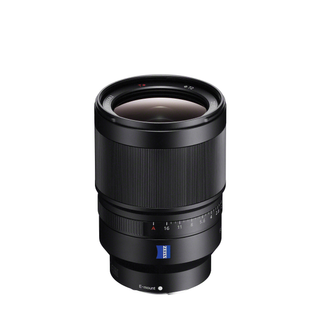
Best for reportage
Big but sophisticated, this 35mm E mount prime offers superlative sharpness, a fast f/1.4 aperture and the unusual addition of a manual aperture ring.
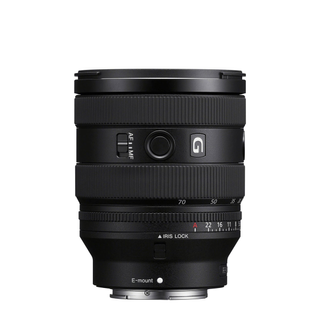
Best for video
A versatile everyday lens for enthusiasts, its versatility extends to video, with a compact build and fast, reliable and relatively quiet focusing when filming.
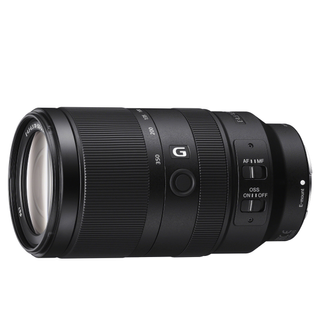
Best for APS-C beginners
An affordable mid-tier telephoto for Sony’s crop-sensor cameras, this is a versatile lens with very good optical quality, a useful range and solid build.
The best Sony lenses in 2024
Why you can trust TechRadar
Below you'll find full write-ups for each of the best Sony lenses in our list. We've tested each one extensively, so you can be sure that our recommendations can be trusted.
The best Sony wide-angle zoom lens

Specifications
Reasons to buy
Reasons to avoid
A significant upgrade to one of Sony’s best wide-angle zoom lenses, the FE 16-35mm F2.8 GM II is an even better choice for serious photographers. At 547g, it’s some 20% lighter than before. We didn’t specifically notice the weight reduction in our review, but it certainly feels compact for a 16-35mm f/2.8 lens. Another change is the new aperture ring, which has a 'clickless' switch for smooth shifts when shooting video. Closer focusing means you can also use it effectively for close-ups, as well as wide shots.
The original 16-35mm f/2.8 G Master delivered excellent quality, and this version is sharper still. Images are packed with crisp detail across the frame. We we also impressed with focusing: by the end of our tests, we simply trusted it to work. If you don’t need to shoot at f/2.8, you’ll find better value from the Sony FE PZ 16-35mm f/4 G lens. Similarly, if you’re a street photographer who mainly shoots at 35mm, the Sony FE 35mm f/1.4 G Master might make more sense. But if you want the versatility of 16-35mm and demand the absolute best detail possible, this is the lens for you.
- Read our in-depth Sony FE 16-35mm F2.8 GM II review
The best wide-angle zoom for Sony APS-C cameras
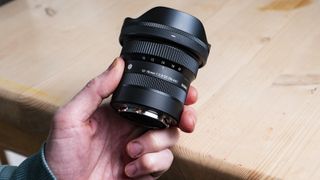
Specifications
Reasons to buy
Reasons to avoid
The 10-18mm F2.8 DC DN helps to cement Sigma’s reputation for top-quality third-party glass. Paired with a Sony APS-C camera like the A6700, it’s equally as useful for vloggers as it is for landscape photographers. In our review, we were impressed by its build quality and the usefulness of its ultra-wide field of view. We also noted that it compares in size to Sony’s 10-18mm f/4 lens, yet offers a constant f/2.8 aperture – which makes it great for working handheld in low light, and capturing soft backgrounds.
Optically, this glass is sharp at any setting. With lens corrections disabled, we did notice significant vignetting and barrel distortion; but leave them enabled and there are very few flaws to speak of. The minimum focus distance is also good for up to 0.5x magnification, which is plenty for proper close-up work, and we found pleasing bokeh when shooting at f/2.8. Those who like direct controls will need to look elsewhere, as there are no external switches or buttons. But if you want a lightweight, streamlined ultra-wide, this is a lens we can confidently recommend.
- Read our in-depth Sigma 10-18mm F2.8 DC DN review
The best wide-angle Sony prime lens
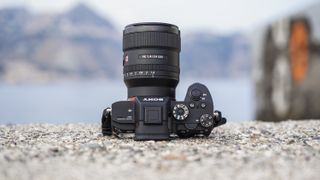
Specifications
Reasons to buy
Reasons to avoid
Sony designed the FE 24mm f/1.4 GM around four key criteria: resolution, bokeh, speed, and a compact and lightweight design. Based on our review, it doesn't disappoint on any of those. Image quality proved stunning in testing, with excellent sharpness across the frame, while the 11-blade circular aperture rendered smooth, natural-looking bokeh.
We found focusing swift, thanks to the Direct Drive SSM (DDSSM). At only 445g, it also weighs in at quite a bit lighter than Canon's 24mm f/1.4 (650g), Nikon's 24mm f/1.4 (620g) and Sigma's 24mm f/1.4 (665g). Combine all of that with fantastic build quality and you've got a Sony lens that should continue to deliver for several generations of full-frame Alpha cameras. The only real downside is its hefty price tag.
- Read our in-depth Sony FE 24mm f/1.4 GM review
The best standard zoom for Sony cameras
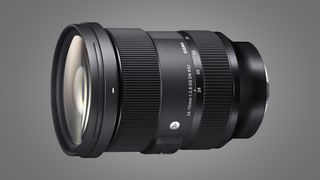
4. Sigma 24-70mm f/2.8 DG DN Art
Specifications
Reasons to buy
Reasons to avoid
Lighter than the 24-70mm f/2.8 Art lens for Canon and Nikon, the Sigma's DN version represents a complete redesign. It's 200g lighter, making it more manageable on a streamlined Sony mirrorless body – although still pretty weighty at 830g. The lens is impressive mechanically as well as optically. Its stepping motor autofocus system is very fast and virtually silent in operation, and comes complete with the usual electronically coupled focus ring, which enables very precise manual adjustments.
Image quality is mostly fabulous, with superb sharpness and contrast, and absolutely negligible color fringing. Aperture control is based on an 11-blade diaphragm which remains very well-rounded when stopping down, helping to retain attractive bokeh. The only minus points are that barrel distortion is rather noticeable at the short end of the zoom range and vignetting is quite severe at f/2.8, but automatic in-camera corrections are available for both of these aberrations.
The best standard prime Sony lens
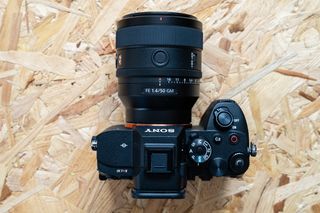
Specifications
Reasons to buy
Reasons to avoid
Traditionally, nifty fifties are inexpensive, compact and capable of producing great images. This 50mm prime does the second two fantastically: in our review, we described it as “an exquisite lens”, praising its excellent quality at all apertures, as well as its tidy, lightweight design. What’s more, its autofocus is rapid, accurate and operates almost silently, making it just as versatile for video as it is for stills. Shooting wide open, we found bokeh pleasing as well.
The downside is that you’ll need to part with a significant amount of money to buy one. The price is firmly in professional territory, making it a less accessible option for many enthusiasts. And if you are willing make such a significant investment in a 50mm prime, you might want to look further upwards towards the even faster Sony FE 50mm f/1.2. Still, if you want a high-quality prime lens that’s built well and sized to take anywhere, there’s no denying that the Sony FE 50mm f/1.4 is a fantastic piece of glass.
- Read our in-depth Sony FE 50mm F1.4 GM review
The best Sony telephoto zoom lens

6. Sony FE 100-400mm F4.5-5.6 GM OSS
Specifications
Reasons to buy
Reasons to avoid
While 1,395g is hardly lightweight, the Sony FE 100-400mm f/4.5-5.6 GM OSS is relatively compact for a telephoto. It actually weighs less than the FE 70-200mm f/2.8 GM, yet covers a significantly greater focal length. It's well-built, handles well and balances fantastically with full-frame Sony bodies such as the Alpha A9.
Focusing is incredibly quiet and quick, while the built-in optical stabilization means you can reduce camera-shake by five stops. Optically, results are very good. Don't expect results to match rival primes, but sharpness is very good. Overall, we think it's a great telephoto for a range of scenarios, from portraits to sports.
The best Sony telephoto prime lens
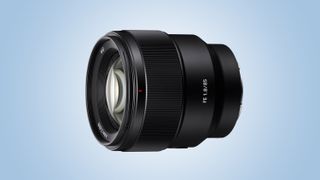
7. Sony FE 85mm f/1.8
Specifications
Reasons to buy
Reasons to avoid
This fairly chunky optic nonetheless only weighs in at a pretty modest 371g thanks to a predominantly plastic construction, but balanced really nicely on the Alpha A7R II we tested it with. The design is very clean, to such an extent that there's no distance or DOF scales. Nevertheless, this is a fantastic portrait lens.
Focusing is nice and brisk, while the nine-blade diaphragm delivers really beautiful bokeh. Optically, there's little to fault it on either: it's incredibly sharp at the centre of the frame throughout the aperture range. If you can't justify one of the more exotic Sony portrait lenses, this is a great option.
The best super telephoto Sony zoom lens
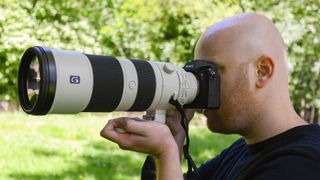
8. Sony FE 200-600mm F5.6-6.3 G OSS
Specifications
Reasons to buy
Reasons to avoid
With a tough, weather-sealed construction, this super telephoto is ideal for everything from action sports to wildlife photography. The maximum 600mm focal length is epic on a full-frame body and gives a phenomenal 900mm ‘effective’ reach on Sony’s APS-C format cameras, thanks to the 1.5x crop factor. Handling is excellent, with well thought-out controls: three customisable focus-hold buttons are fitted around the lens barrel and there’s an autofocus range limiter. A third mode on the optical stabilizer also makes it easier to track erratic subjects.
Helped by the inclusion of one aspherical element and five ED (Extra-low Dispersion) elements, sharpness and contrast are outstanding for a super-telephoto zoom and amazingly consistent throughout the entire zoom range, right up to 600mm. Color fringing and pincushion distortion are also very negligible at all focal lengths. Autofocus is super-fast and, unusually for a super-telephoto zoom, the physical length remains constant at all focal lengths. All in all, this is a fabulous lens for both full-frame and APS-C format Sony cameras.
The best Sony macro zoom lens
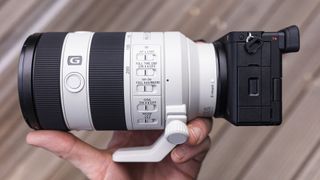
Specifications
Reasons to buy
Reasons to avoid
A decade after the original, the Sony FE 70-200mm F4 G OSS II represents a total redesign. Compared to the first iteration, its smaller and lighter – a fact alone that would make it worth upgrading. In testing, we tried it with both the Sony A7C R and the crop-sensor A6700, both of which proved an excellent fit. But there’s more: the second edition is faster to focus and sharper, too. With a Sony full-frame body attached, it’s one of the most versatile lenses in this list.
In our review, we found it capable of rendering super-sharp detail with virtually no distortion. We found almost nothing in our sample images to pick fault with. It also delivers pleasant bokeh for an f/4 lens. Sure, the Sony FE 70-200mm F2.8 is better for bokeh and low light, but it’s also heavier and more expensive. What the F4 adds is class-leading macro focusing, with up to 0.5x magnification at any focal length. If you want a truly versatile, travel-friendly telephoto zoom and you’re happy to a pay a premium for it, this is a winning combination.
- Read our in-depth Sony FE 70-200mm F4 G OSS II review
The best Sony macro prime lens

10. Sony FE 90mm F2.8 Macro G OSS
Specifications
Reasons to buy
Reasons to avoid
At its closest focus distance, this 90mm lens gives full 1.0x macro reproduction, making it an ideal choice for monstrous enlargements of tiny bugs and other small objects. Other attractions include top-quality glass, quick and ultra-quiet autofocus, OSS (Optical SteadyShot) stabilization, plus a nicely rounded nine-blade diaphragm.
Image quality and handling are excellent too, and this isn't just a one-trick macro pony. The combination of a 90mm focal length and fairly fast f/2.8 aperture make it equally useful when you want to minimise depth of field for portraiture or still life.
The best Sony lens for portraits
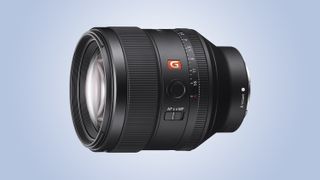
11. Sony FE 85mm F1.4 GM
Specifications
Reasons to buy
Reasons to avoid
This is a stunning lens and the perfect optic for beautiful portraits. The 11 blade rounded diaphragm helps produce sumptuously soft and dreamy bokeh in defocused areas. Sharpness across the entire frame is very good at f/1.4 – and stunning at f/2.8 and beyond.
Sony’s Nano AR coating fends off ghosting and flare, while lateral and longitudinal fringing are both minimal. The focus hold button and de-click aperture ring option are nice bonuses, with the latter working very well when shooting video.
The best Sony lens for reportage
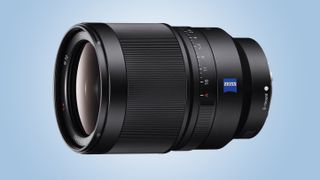
12. Sony Distagon T* FE 35mm F1.4 ZA
Specifications
Reasons to buy
Reasons to avoid
The first 35mm prime lens to be launched for full-frame E-mount bodies was the dinky little FE 35mm f/2.8, designed along Zeiss's Sonnar principles. The newer f/1.4 Distagon lens is massive by comparison, measuring 79x112mm and weighing 630g. However, it's also two f-stops faster and has a much more sophisticated feature set.
Unusually for an E-mount lens, there's a manual aperture ring. As a bonus, you can select one-third click steps or click-free rotation, the latter being ideal for shooting movies. Sharpness is exemplary, right across the whole image frame, while chromatic aberration is only slight and barrel distortion extremely low for a 35mm lens.
The best Sony lens for video

Specifications
Reasons to buy
Reasons to avoid
If you’re looking for a compact everyday lens with a versatile focal range, this 20-70mm glass is a great fit for Sony’s full-frame mirrorless cameras. Besides a useful zoom range, its constant f/4 maximum aperture makes it a flexible option for a spectrum of subjects and scenarios. At 488g, it’s easy to carry all day, while its dimensions proved conveniently portable during our tests. Quiet motors are a win for video – even if they're not completely silent – as is the aperture ring, which can de-click for smooth adjustment.
While it can go wider than most standard zooms, we did encounter distortion at the wide end of the focal range. If you shoot with an APS-C model, the effective range of 35-105mm also means you’ll lose the wide-angle appeal. Still, it produces beautifully sharp images throughout the aperture range and can’t be faulted on detail. International price disparities mean it’s not the cheapest in every region, but if you can look past the optical distortion, it’s a respectable lightweight lens that can cover the majority of photography situations.
- Read our in-depth Sony FE 20-70mm F4 G review
The best Sony APS-C lens for beginners
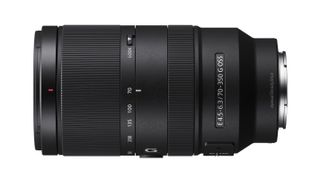
14. Sony E 70-350mm F4.5-6.3 G OSS
Specifications
Reasons to buy
Reasons to avoid
Relatively compact for a lens with 5x equivalent optical zoom, the 70-350mm f/4.5-6.3G OSS is an excellent first purchase when you're ready to move beyond your Sony kit lens. At 625g, it doesn't add too much heft to your kit bag, yet covers a very useful telephoto zoom range. And while it's not an insignificant purchase, we think it represents strong value for improvers.
Designed to appeal in part to those shooting sports, wildlife and action with fast cameras like the Sony a6600, its autofocus is impressively quick and quiet. It also promises high optical performance, with built-in optical image stabilisation, plus typical G master lens sharpness from corner to corner.
How to choose the best Sony lens
As you’ll see from the list above, the best Sony lenses fall into a number of categories. There are fast primes for street photography and fast primes for portraits; wide-angle zooms for landscapes and standard zooms for everyday shooting; telephotos for getting closer to the action and super telephotos for getting closer still.
Arguably the most important factor when selecting a lens is your budget. In any category, from wide-angle to telephoto, there will be different grades of glass. You’ll usually find entry-level lenses, enthusiast options, all the way through to professional-grade kit. Which is right for you will depend on your skill level, but also on how much you’re happy to spend. The hardest question is for novices: beginner glass is the obvious choice, but spending more on a hobbyist lens will often give you more room to grow.
Next you need to think about what you plan to shoot. Of course, one lens isn’t limited to one type of photography, but certain lenses are better suited to certain pursuits. Each genre demands different focal lengths and features from a lens. Portrait photographers typically prefer lenses with wide apertures that can produce a shallow depth of field, while landscape photographers might prioritize wider angles and overall sharpness.

If you’re into sports and wildlife, for example, you’ll probably want a telephoto like the Sony FE 100-400mm F4.5-5.6 GM OSS, which benefits from a long reach, excellent autofocus performance and a relatively low weight. Equally, if landscape photography is your genre, a wide-angle zoom like the Sony FE 16-35mm F2.8 GM II is an excellent choice. Or if you’re looking for a versatile nifty fifty prime that can cover everything from streets to portraits, the Sony FE 50mm F1.4 GM is a winning pick.
There are several technical and physical factors to consider when choosing your ideal Sony lens, some of which involve trade-offs. A fixed focal length usually comes with a wider maximum aperture, such as f/1.4, offering a shallow depth of field and better light-gathering abilities in dim conditions. Conversely, zoom glass usually has a narrower aperture, but gives you the flexibility to cover different focal lengths without changing lenses.

Speed and accuracy, as well as overall optical quality, are factors that you’ll find mentioned in all of our reviews above. These often improve as the cost increases, so the aim is to find a sweet spot between price and performance. You can read more about how we test these elements below.
Your camera body is also a crucial consideration. You need to think about how the weight and handling of a lens will marry with it: larger lenses tend to be heavier and more durable, but can make a compact body feel front-loaded. Just as important is sensor size. Not all lenses are compatible with both APS-C and full-frame sensors; those that are will have a different crop factor across the two. Confirm whether your camera has in-body image stabilization, too. If it doesn’t, you might want to consider a stabilized lens for sharper handheld shooting. And do check that your camera has a Sony E mount to work with the lenses above, otherwise you might need an adapter.
How we test Sony lenses
When testing the best Sony lenses, we take our evaluation process seriously. Our expert reviewers spend a significant amount of hands-on time with each lens, to ensure that we’ve understood the benefits and drawbacks of each model for different types of photographer. We test each lens with one of the best Sony cameras and, where relevant, try to use it with both a full-frame and an APS-C model.
Our testing process goes beyond controlled conditions. We think a lot about the real-world situations where most Sony users will shoot with their lenses. We take each lens out into the field and put it through a number of different scenarios and environments. These can range from landscapes and portraits to busy streets by day and night. This approach allows us to assess the practical performance of a given lens, including features such as image stabilization – and how suitable it is for different styles of photography.
During these tests, we’ll consider a number of factors. A key one is autofocus performance, particularly when reviewing lenses aimed at action or street photography. We test both the speed and accuracy of the lens in various lighting conditions, as well as listening for the volume of its motor.

We also think about the build quality and ergonomics of every lens, both for durability and usability. Our reviewers assess the feel of the barrel and whether it seems rugged enough for the kind of scenarios where the lens will be used. We also consider handling, including the placement of controls and focus rings, both for new and experienced users.
When it comes to assessing the images shot on test, there are a few factors we look out for. We start by evaluating the overall quality, looking particularly at sharpness and contrast. For lenses with a wider aperture, we’ll look for smooth bokeh in defocused areas. We also keep a careful eye out for any optical imperfections that can reduce image quality, including distortion, fringing and chromatic aberrations.
From the result of all these tests, we’ll form an assessment of a lens’ suitability for different types of photography. We’ll also consider its strengths and weaknesses against those of alternative lenses, including similarly priced options from Sony and other manufacturers, as well as more expensive glass in the same category. The result determines whether we recommend it as one of the best Sony lenses.
Get daily insight, inspiration and deals in your inbox
Get the hottest deals available in your inbox plus news, reviews, opinion, analysis and more from the TechRadar team.
Formerly News Editor at Stuff, Chris has rarely been able to resist the bite of the travel bug – so he now writes about tech from the road, in whichever Wi-Fi-equipped café he can find. Fond of coffee kit, classic cars and sustainable gear, if there’s one thing Chris loves more than scribbling, shooting and sharing his way around the world, it’s alliterative triplets.

